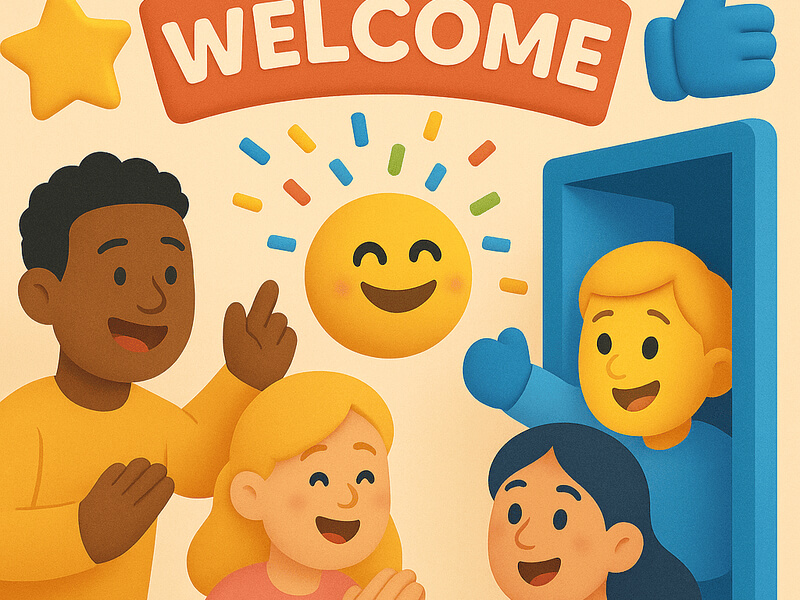
HR leaders are expected to improve employee engagement, retain top talent, and support remote and hybrid teams. With a highly competitive talent landscape, this just shows that they need better tools to face different scenarios.
In this moment, relying on generalized rewards or sporadic acknowledgments isn’t enough. With AI-driven platforms, HR professionals can make full use of powerful tools to personalize both incentives and large-scale recognitions for employees.
What role does AI play in modern HR?
Research shows that 65% of managers now use AI at work. Of this number, 94% rely on AI for crucial decisions, like promotions, hiring, and firing. AI is effectively reshaping how HR teams work, and this has a significant strategic impact. It has gone beyond administrative support. One of its most valuable applications is in understanding the preferences and behaviors of employees, delivering better rewards right on time.
As HR tech evolves and remote teams grow, every other tool begins to play a crucial role in ensuring data safety, especially secure VPN downloads. After all, it’s important to stay safe when accessing AI-driven platforms across the world.
From generic rewards to hyper-personalized systems
AI can analyze massive amounts of data, from employee feedback to performance metrics. This is what allows it to personalize incentives based on what motivates each individual to stay within a company. These intelligent systems can continuously learn and adapt their recommendations, making retention strategies more effective over time — read more about AI agents and their learning capabilities to see how this personalization evolves. For some people, this might mean flexible time off. For others, public praise, education opportunities, and professional development might be more important which is why companies looking to implement such solutions should hire AI developer expertise to make it happen.
3 top benefits of personalization:
- More engagement: When employees feel that they’ve been meaningfully recognized for their work, they’re more likely to stay motivated in the company.
- Less bias: Though not every AI system is bias-free, the truth is that they can help detect patterns of neglect and inequity that human resources might have missed. All contributions need to be acknowledged to promote employee loyalty.
- Real-time response: Some rewards might come instantly, with AI detecting good behavior and other achievements, rather than just relying on annual reviews.
Recognizing contributions across teams
For hybrid and remote work environments, visibility and scalability, especially when training remote workers, are a challenge. When AI can track key interactions and performance trends, it can help solve this particular problem.
For example, a team member in a different country who regularly receives great peer ratings can be flagged automatically for a monthly recognition, even if the manager isn’t physically there to observe their work. This amplifies access to company culture and gives everyone a fair chance.
Even more importantly, tech infrastructure like encrypted communication tools and VPNs ensures that this confidential data remains private and compliant with the most recent legal regulations.
AI-Powered platforms in action
HR teams are increasingly turning to platforms that integrate AI to:
- Recommending the best rewards per employee profile.
- Automating recognition prompts for managers using context engineering.
- Tracking impact metrics like engagement scores, retention rates, and team morale.
- Implementing team-building strategies with their remote employees.
A few tools can include sentiment analysis, detecting burnout or dissatisfaction early by reading between the lines of employee feedback and emails. This is what helps HR act before it’s too late.
Ethical use of AI and trust considerations
While these tools offer immense promise and possibilities, the challenges have to be addressed. HR teams have to make transparency a priority, making sure algorithms do not reinforce human biases. Research has shown that 22% of companies already use AI to research employee compensation. 63% of them are also exploring it for benefits and retention strategies. That’s why early ethical considerations are so important.
Some of the best practices include:
- Communicating openly about AI tools and their goals.
- Regularly auditing the AI’s outputs for fairness and accuracy.
- Allowing employees to opt in or adjust their recognition preferences to protect their data.
When employees can understand how and why AI is used, they can make the choice to trust this tool or to opt out of it. They’re more likely to have a positive response when they know how these tools work in their favor.
Looking ahead: a more human approach with AI.
AI in human resources isn’t there to replace the human element: it’s there to build and improve upon it. By automating data-heavy tasks and uncovering nuanced insights, AI frees professionals so that they can focus on doing what a robot can’t do: empathy, connection, and company culture.
Organizations evolve, and personalized recognition will become a must-have in the short term. With the right approach, this could change things for the better.
























